[Summer 2024]

Image 006

Fjord de glace de Qooqqut au sud ouest du Groenland. © Juliette Pavy / Collectif Hors Format Lauréate 2023 du Prix Françoise Demulder Qooqqut fjord, south-west Greenland © Juliette Pavy / Collectif Hors Format 2023 Françoise Demulder Grant recipient Photo libre de droit uniquement dans le cadre de la promotion de la 4e édition du Prix Françoise Demulder 2032 au format 1/4 de page maximum. Résolution maximale pour publication multimédia : 72 dpi. Mention du copyright obligatoire. Cette image ne pourra plus être utilisée en libre de droit après le 30 septembre 2024. The photos provided here are copyright but may be used royalty-free for press presentation and promotion of the 4th edition of the 2023 Françoise Demulder Grants Maximum size printed: quarter page Maximum resolution for online publication: 72 dpi Copyright and photo credits (listed with captions) must be printed. This photo can no longer be used royalty-free after September 30, 2024.
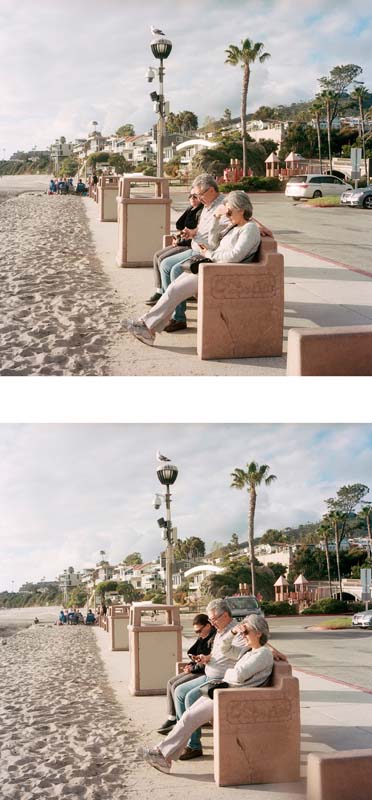
Image 024
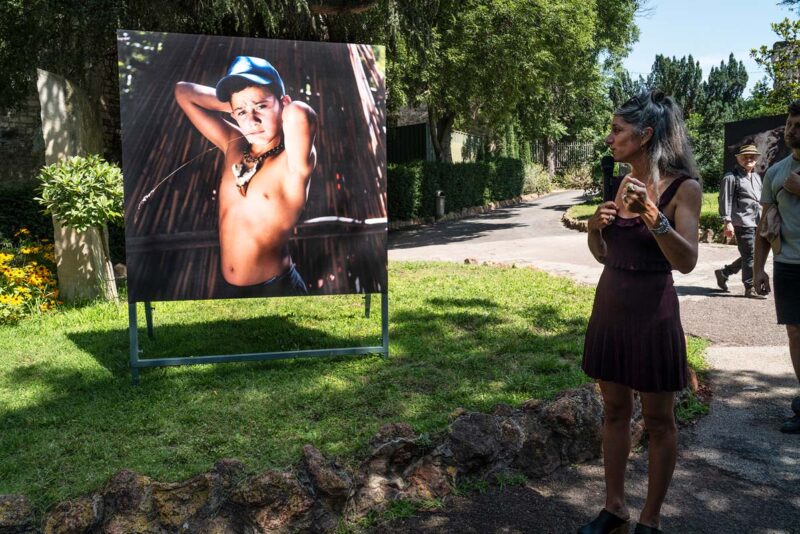

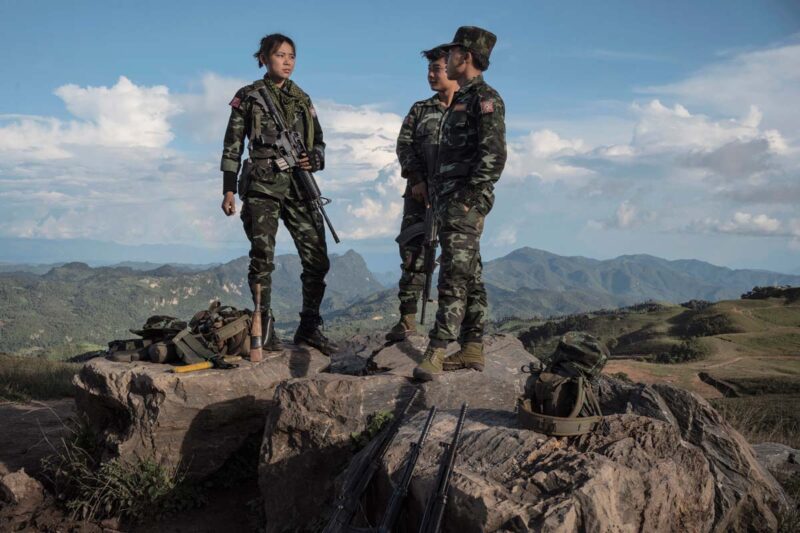
Karenni soldiers fighting against the Tatmadaw armed forces stand on an outcrop overlooking a valley on October 09, 2022, in Kayah state, eastern Myanmar. Kayah state lies in a highly strategic area of the country, serving as a bridge between resistance strongholds to the south and north. It borders Thailand to the east—a source of weapons and other supplies and Shan State in the north, where the country’s most powerful armed groups operate.
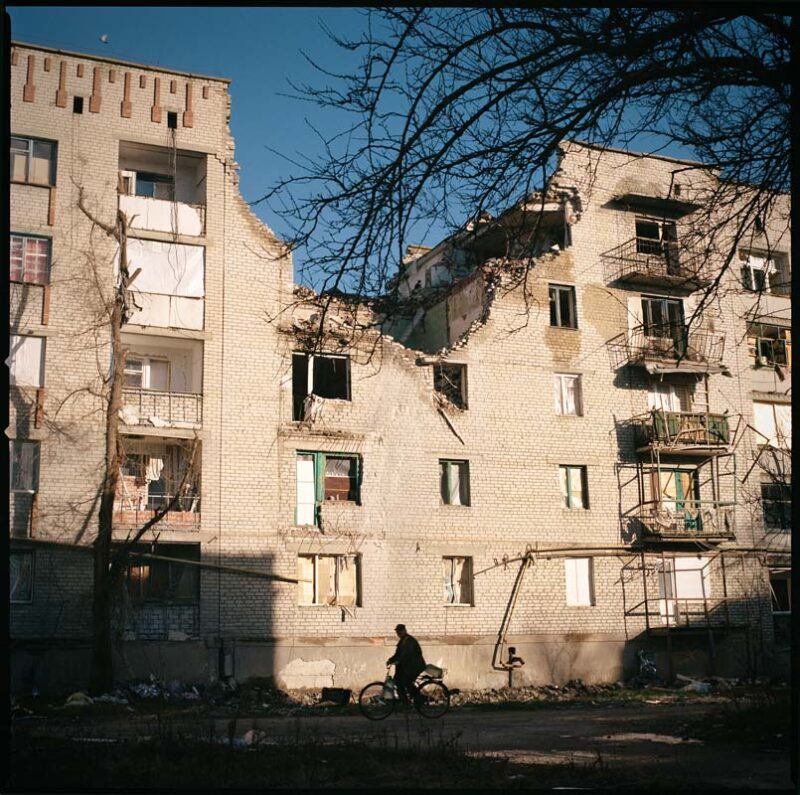
A heavily damaged apartment block in Lyman, Donetsk region. December 2022. The people who remain here live without heating, running water, with hardly any electricity or cell service in a town that has been heavily damaged, and continues to be hit, by Russian missile strikes. Lyman was occupied by Russian forces and liberated in the Ukrainian Eastern Counter offensive on 2nd October 2022. Anastasia Taylor-Lind
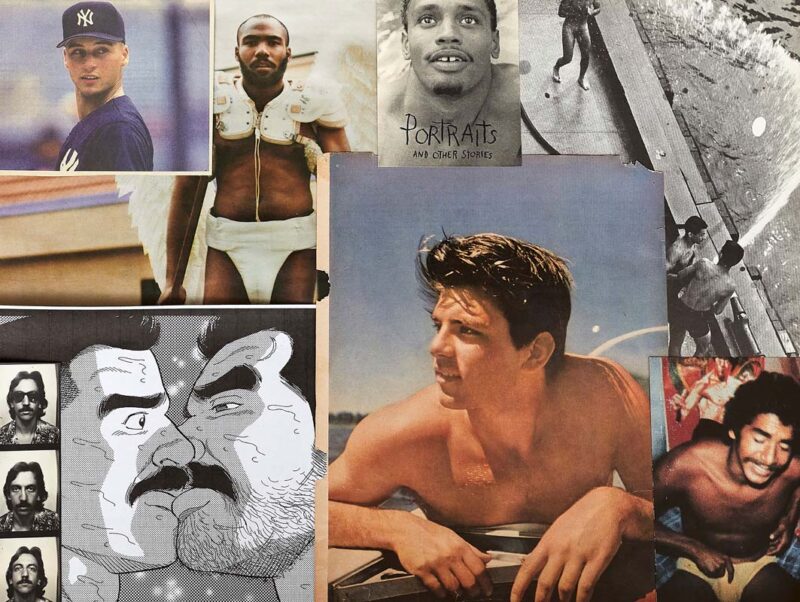
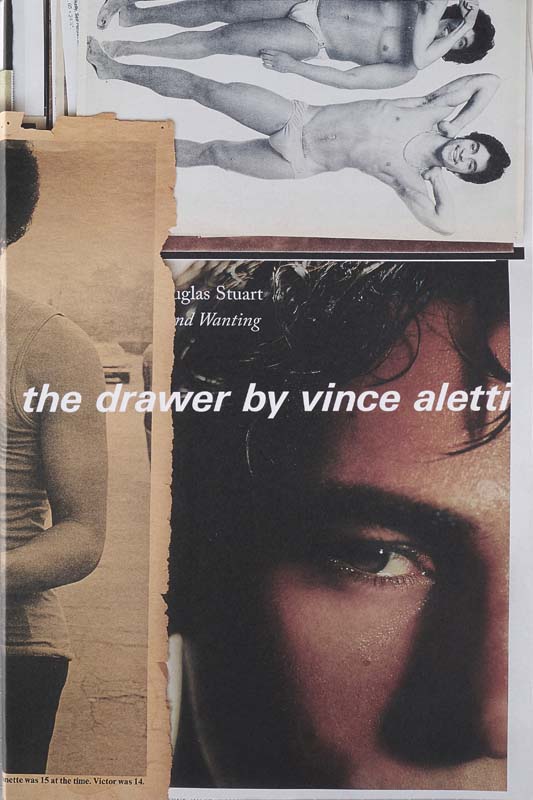
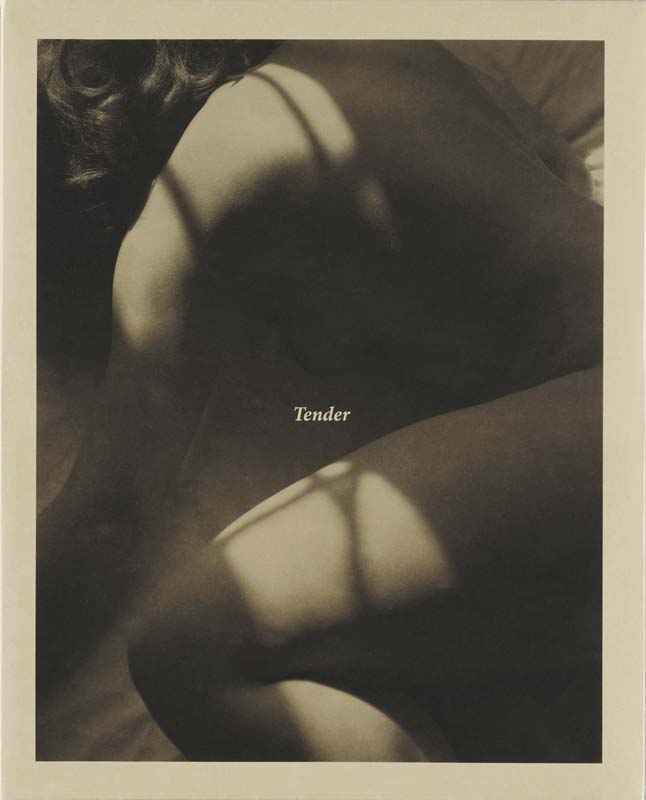
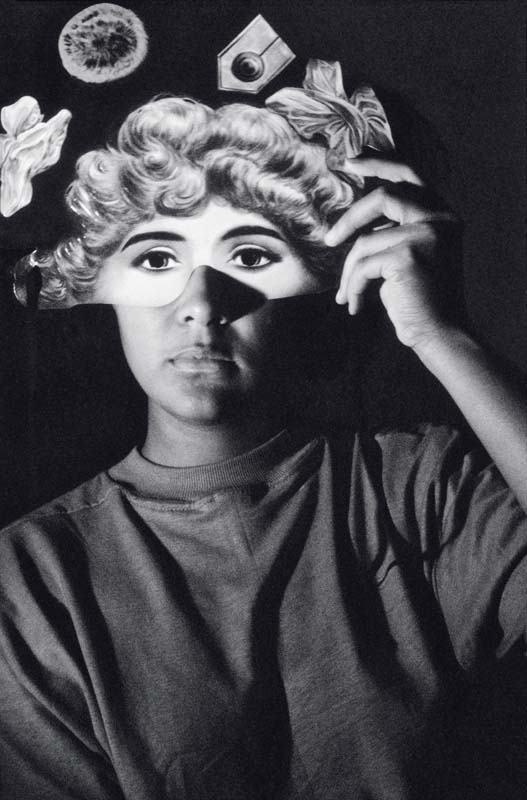

Ces jeunes filles sont membres de l'association la casa CAMI de Quintanaroo qui s'adresse aux femmes mayas en promouvant des actions en faveur des droits des femmes indigènes et afro-mexicaines, mais aussi en prévenant la violence contre les femmes, les droits sexuels et reproductifs. 25 juin 2021, port de Felipe carillo, Quintana Roo, Mexique © Mahé ELIPE / Women Photograph Lauréate 2023 du Prix Françoise Demulder Members of La Casa CAMI (Quintana Roo), an association for indigenous women from Maya and Afro-Mexican communities working to prevent violence against women, and advocating for sexual and reproductive health and rights. June 25, 2021, Felipe Carillo Puerto, Quintana Roo, Mexico © Mahé ELIPE / Women Photograph 2023 Françoise Demulder Grant recipient Photo libre de droit uniquement dans le cadre de la promotion de la 4e édition du Prix Françoise Demulder 2032 au format 1/4 de page maximum. Résolution maximale pour publication multimédia : 72 dpi. Mention du copyright obligatoire. Cette image ne pourra plus être utilisée en libre de droit après le 30 septembre 2024. The photos provided here are copyright but may be used royalty-free for press presentation and promotion of the 4th edition of the 2023 Françoise Demulder Grants Maximum size printed: quarter page Maximum resolution for online publication: 72 dpi Copyright and photo credits (listed with captions) must be printed. This photo can no longer be used royalty-free after September 30, 2024.
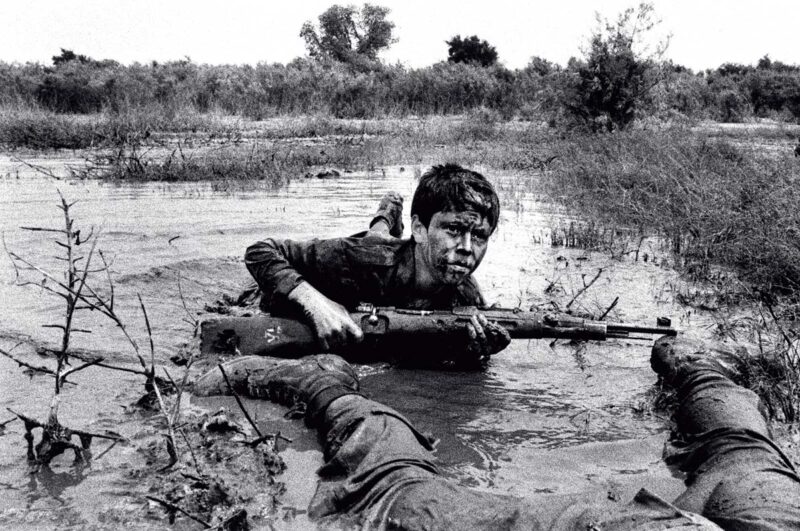
Hassan Jangju, un jeune combattant bassidji, lors de la bataille près de Susangerd dans le sud de l'Iran. Il est ensuite tombé en martyr lors de l'opération Kheibar en 1984, au cours de la bataille au nord de Bassorah. Cette image d'Hassan le combattant est devenue un symbole de la résistance iranienne, pendant et après la guerre, et figure dans les manuels scolaires. Le corps d’Hassan a été retrouvé en 2017 et, quelques heures après ses obsèques, sa mère est morte d'une crise cardiaque. Susangerd, Iran, mars 1981. © Alfred Yaghobzadeh, lauréat de la Bourse Saif / Benoît Schaeffer pour l’édition photographique 2023 Hassan Jangju, a young Basij fighter in battle near Susangerd in southern Iran. Later, in 1984, he died as a martyr in Operation Khybar, during the battle north of Basra. The picture of “Hassan the Warrior” came to be a symbol of Iranian resistance, both during and after the war, and was included in school textbooks. After Hassan’s body was found in 2017, a funeral ceremony was held. A few hours later his mother died of a heart attack. Susangerd, Iran, March 1981. © Alfred Yaghobzadeh, recipient of the La Saif-Benoît Schaeffer Publishing Grant for a Photography Book (2023) Photo libre de droit uniquement dans le cadre de la promotion de la 35e édition du Festival International du Photojournalisme "Visa pour l'Image - Perpignan" 2023 au format 1/4 de page maximum. Résolution maximale pour publication multimédia : 72 dpi Mention du copyright obligatoire. Cette image ne pourra plus être utilisée en libre de droit après le 31 décembre 2023. The photos provided here are copyright but may be used royalty-free for press presentation and promotion of the 35th International Festival of Photojournalism Visa pour l'Image - Perpignan 2023. Maximum size printed: quarter page Maximum resolution for online publication: 72 dpi Copyright and photo credits (listed with captions) must be printed. This photo can no longer be used royalty
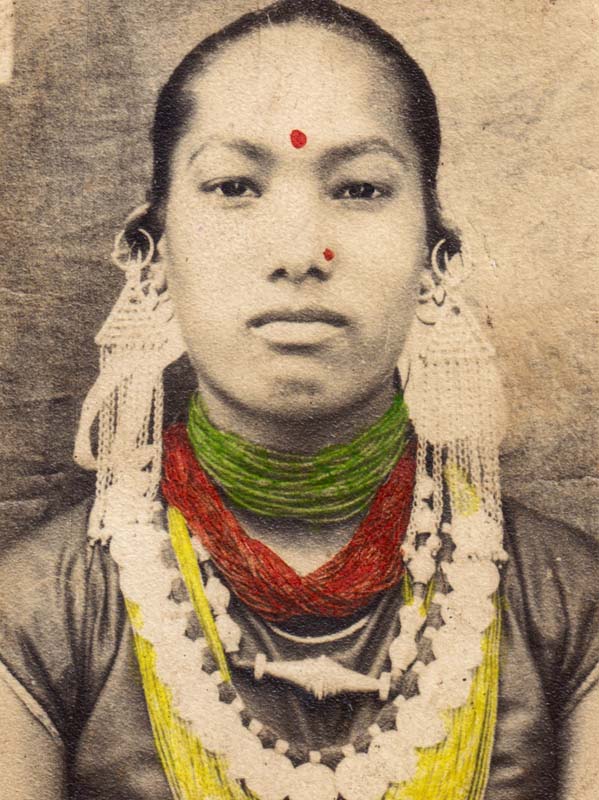
Premkali Chaudhary from Karjahi, Dang who was part of a peasants’ revolt against the abuses of local landlords in 1980. The landlords had started intimidating peasants and vandalized their property with police help following the national land tenure reform of 1979, compelling women to take action. Karjahi Movement Collection/Nepal Picture Library
by Bruno Chalifour
[EXCERPT]
Post-COVID-19, how is photography faring in France? In the past five years the French government commissioned two surveys of the situation, discussed below. Their conclusions and recommendations attempt to staunch the decline of the profession and define the French cultural exception in this field. Since 2022, the focus has been on the visibility of women as photographers and as directors of photographic institutions, photobook publishing, and a major project, Radioscopie de la France: Regards sur un pays traversé par la crise sanitaire, conducted between 2021 and 2024 and involving two hundred photographers. Here, I review how this new energy was manifested, especially in the three key international events in France: Les Rencontres d’Arles, Visa pour l’image, and Paris Photo.
Since the 1970s, public policies regarding photography have multiplied and diversified. Certainly, France is not the only country in which politics and photography are related, but many major productions there depend on public funding.
The current situation in numbers. In France, a plethora of photography events take place from spring to fall. According to published figures, in 2023 all three major events regained the audiences lost during the pandemic. Les Rencontres d’Arles, a multifaceted festival based on art photography, young talent, collections, historical monographs, and photobooks, drew 145,000 people to its forty-five exhibitions, for a total of 1.5 million visits. Visa pour l’image, the international photojournalism festival based in Perpignan, saw its number of visits grow by 23,000, for an average of 300,000 exhibition visits a year. A record 65,000 visitors came to Paris Photo, a 7 percent increase over 2022. Three more popular events, aimed at a national audience, must be added: Le Salon de la Photo in Paris, with almost 40,000 visitors in two days in 2023, and the thematic festivals (nature and environment) in Montier-en-Der (45,500 visitors) and La Gacilly (300,000 visitors).
Every year, photographers have access to over a hundred residencies and over a hundred awards, some of which offer prizes of up to €30,000 ($43,800). In 2023, Arles bestowed four photography awards, including two exclusively for women, accompanied by four others for books. In Perpignan, almost twenty awards were handed out, three of them reserved for women. The trend toward awards reserved for women is growing due to partnerships between private institutions and the French Ministry of Culture. This year, the director of Paris Photo, Marta Gili, and the photographer Jane Evelyn Atwood received the title of Officier des Arts et des Lettres from then minister of culture, Rima Abdul Malak, at the fair.
Institutional interventions. Given its preoccupation with the situation of photography, the Ministry of Culture commissioned two studies in three years. The first, in 2018, investigated means of production and dissemination in the wake of changes engendered by digital technologies. The main focus was the fields of fine-art photography and photographic patrimony. Sam Stourdzé, at the time director of Les Rencontres d’Arles, was the commissioner designated by minister Françoise Nyssen. Stourdzé recommended the creation of an “apex” institution just as he was approached by Xavier Bertrand, president of the Conseil régional des Hauts-de-France, to organize the Institut pour la photographie, with an initial budget of €12 million ($17.5 million). The facility opened in Lille in 2019 “in collaboration with Les Rencontres d’Arles,” to the detriment of La Maison de la photographie, an institution founded in 1997 in a renovated industrial building that was already covering the missions of popular education and promotion of the medium through exhibitions as well as an international photography festival, Les Transphotographiques.
The second study, initiated by the Ministry of Culture as a
response to the impact of COVID-19, was assigned to Laurence Franceschini. Her report, submitted in December 2021, looked into “funding of the production and dissemination of photographic works.” It drew on figures from various sources, both governmental and organizations in the field, in order to form an accurate picture. Some thirty public intervention measures were proposed. These concerned a variety of subjects, from copyright and intellectual rights to the representation of women, from education (including image literacy) to photographic creation, from support for agencies and publishers to the protection and valorization of patrimony. Another spectacular outcome was the launching of Radioscopie de France in 2021, overseen by the Bibliothèque nationale de France, with a budget of €5.6 million (around $8 million). Between 2021 and 2024, two hundred photographers (photojournalists and art-school graduates) received funding of €22,000 each. Men submitted 71 percent of the applications, women 29 percent; 40 percent of the women applicants received a grant.
A feminizing field. In 2023, leadership at Les Rencontres d’Arles doubled, as Aurélie de Lanlay became co-holder of the directorship position held by Christoph Wiesner. The administration of the festival was also feminized when Agnès Bénichou took over as its head, with support for exhibition production from Cécile Nédélec. Both were assisted by teams made up essentially of women.
Two women were appointed at the helm for the 26th edition of Paris Photo: Florence Bourgeois, director, and Anna Planas, artistic director. The program of “conversations” welcomed fifty-one participants: thirty-eight women and thirteen men. In galleries, the proportion of works by women exhibited grew from 20 percent to 36 percent, all historical periods combined, in a field in which male representation had long prevailed. The leading exhibitions at the Bibliothèque nationale de France also had women as curators: Épreuves de la matière was organized by Héloïse Conésa, and Noir et blanc, une esthétique de la photographie by a team composed of Sylvie Aubenas, Héloïse Conésa, Flora Triebel, and Dominique Versavel.
In fall 2023, La Maison Européenne de la Photographie headlined Viviane Sassen and presented works by Senta Simond and My-Lan Hoang-Thuy. The main exhibition at Jeu de Paume, Centre national de la photographie, was devoted to Julia Margaret Cameron, and a secondary, rather laconic exhibition was dedicated to Victor Burgin. The Fondation Cartier-Bresson showcased two photographers: Ruth Orkin (her self-documented bicycle trip across the United States when she was seventeen) and Carolyn Drake.
Photobooks. With regard to support for photographic publishing, Arles stands out for the number and variety of awards it bestows (photo-text, history, and auteur categories, along with the Dummy Book Award from the LUMA Foundation [Maja Hoffmann]). In 2023, the festival added an extra space, the École nationale supérieure de photographie, to the existing one, Collège St Charles, to host some sixty international publishers.
Paris Photo 2023 devoted two spaces to photography in print, featuring thirty-five publishers and twenty-three magazines. The fair gave out an award in collaboration with the New York publisher Aperture, accompanied by an exhibition of the books in competition. On the left bank of the Seine, a “salon des refusés” of photobook publishers took place under a tent and on a barge. It brought together eighty publishers and booksellers that were not able to enter Paris Photo. In response, however, Paris Photo announced that with its return to the Grand Palais in 2024 more room would be devoted to photographic publishing.
The flip side of the coin. This infatuation with photography is not without its difficulties. The plan led by François Hébel, director of Les Rencontres d’Arles from 2000 to 2014, to transform the vast workshops of the Société Nationale des Chemins de Fer into a European image hub, in the wake of the festival and the École nationale supérieure de photographie, was never realized for lack of public support.
The problems engendered by the pandemic were exacerbated by often-tense relations between the extreme right (in municipalities and regional councils) and the cultural sector, and with photography in particular. Recent years have seen the forcible takeover of Galerie Le Château d’eau by the city of Toulouse, the demise of the popular international festival Voies Off (Arles) and the end of the CéTàVOIR association and its documentary festival ImageSingulières (Sète). In Lille, Olivier Spillebout and his Maison de la photographie have had trouble competing with the new Institut de la photographie.
Glimmers of hope. As we can see, the Franceschini report, delivered in late 2021, is beginning to produce results. Beyond the Radioscopie de France project, the average share of the financing of festivals by the Ministry of Culture grew by 6 percent between 2019 and 2023. Its distribution, however, remains unbalanced. Les Rencontres d’Arles receives about 76 percent of the ministerial budget devoted to festivals, a whopping €1.2 million ($1.7 million), whereas the second-best supported festival, Visa pour l’image, gets a measly
6 percent, just under €400,000 (about $580,000) from the same budgetary envelope.
In Arles, the allocated budget allows for the creation of exhibitions, diversification, photography education (internships for adults throughout the year, school projects), support for emerging artists (the Discovery Award), scrupulous application of copyright, the promotion of photobooks, and payment of honoraria to exhibitors. Concerning the presence of women, the festival has reached parity in exhibitions and gives out the Women in Motion (with support from the Kering group) and Madame Figaro awards.
Les Rencontres d’Arles ticks all the boxes emerging from the Franceschini report. From the festival of photographers for photographers that it was in 1970, it has become a huge machine in 2023. With a budget of over €7 million (more than $10 million), it produced forty-five exhibitions, three nights of screenings in the Roman Theatre, and a photobook publishers fair.
In contrast with the Arles behemoth, Visa pour l’image has had an approach resembling that of Les Rencontres d’Arles in its early days: targeted production and audience, human scale, free exhibitions, and night-time screenings, as well as a presence in workingclass neighbourhoods. Among the prizes and grants handed out, one is financed in part by the Ministry of Culture, two are for women journalists, and one has just been added for books.
Paris Photo is now the most important festival of its type. Originally a copy of Photo Show, the renowned New York fair created in 1979 by the Association of International Photography Art Dealers (AIPAD), the Parisian event has developed its own identity. Paris Photo is open to all galleries, not just AIPAD members. In 2023, 133 galleries, 35 publishers, and two parallel sectors (one devoted to digital images) drew 65,000 visitors. Women photographers at the event benefit from purchasing priority from the Centre national des arts plastiques (a branch of the Ministry of Culture) for the acquisition of artworks, and a special section (Elles X Paris Photo) also receives some public funding.
The works on display at Paris Photo are governed by the laws and tastes of the market. As you wander around, you may catch a whiff of fashion (women’s photography, archives found at flea markets) or a flirtation with concepts that don’t always exude originality (Love 1 by Jung Lee will never rival Bernard Faucon’s works from forty years ago), and whose photographic realization often falls short. You may also come upon fabulous prints (Gustave Legray’s La grande vague; the works of Chris Killip, Edward Burtynsky, and others). More monographic exhibitions were mounted in 2023, enabling a better understanding of the work and eliminating chance and superficiality. Most of the discoveries in this edition came from Asia (with more and more representation), South America (Grete Stern), and Italy (Lori Sammartino, Paola Agosti).
The only regret in 2023 is that, except for the timid “digital” section at Paris Photo, none of the major events included an in-depth analysis of the impact of artificial intelligence, despite the red flag raised at the beginning of the year, when Boris Eldagsen refused the Sony World Photography Award that he had received for his AI-generated image Pseudomnesia: The Electrician.
Translated by Käthe Roth
[ Complete issue, in print and digital version, available here: Ciel variable 126 – TRAJECTORIES ]
[ Complete article, in digital version, available here: … ]
